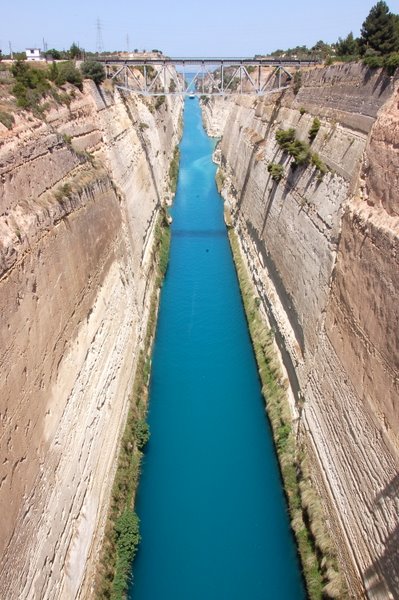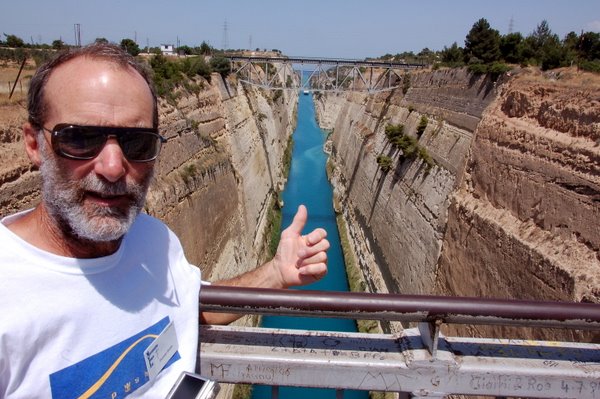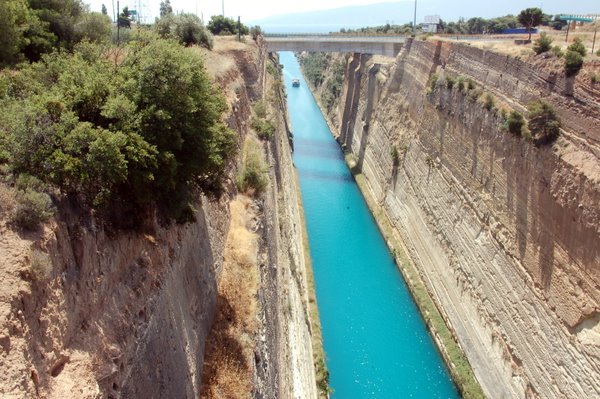
Completed in 1893, the 3.5 mile-long canal was cut several hundred feet deep through solid rock to join the Gulf of Corinth with the Agean Sea. Since it is only 60 feet wide at the bottom, it is too narrow for modern ocean freighters. As such, the canal mostly used by smaller tourist ships; 11,000 ships per year travel through the waterway. If you fell off the bridge, I think the 240 foot drop to the water would kill you even though the water is about 25 feet deep.
The canal wasn’t here when Paul came through, but it was when we did, so we stopped to take a look.
Canals of this sort are hardly new; in fact, this canal was built shortly after the Gulf of Panama. But what makes this interesting is that several people have tried making this canal over the past thousands of years.
 |
The first person was Periander the Tyrant in the 7th century BC. Due to technical difficulties, he abandoned the project, but not before making a simpler (and less costly) overland route.The Diadoch Demetrius (336-283 BC) planned to construct a canal as a means to improve his communication lines, but dropped the plan after his surveyors, miscalculating the levels of the adjacent seas, feared heavy floods.
Even Julius Caesar (r. 48 to 44 BC) planned a canal through the Isthmus. However, he was assassinated before he could bring the scheme to fruition. |
 |
Caesar’s attempts were followed by Emperor Nero (r. 54-68 AD) who personally broke ground with a pick axe and removed the first basket-load of soil – but the project was abandoned when he died shortly afterwards. The Roman workforce, consisting of 6,000 Jewish prisoners of war, started digging 150′-wide trenches from both sides, while a third group at the ridge drilled deep shafts for probing the quality of the rock. As the modern canal follows the same course as Nero’s, no remains have survived. |
